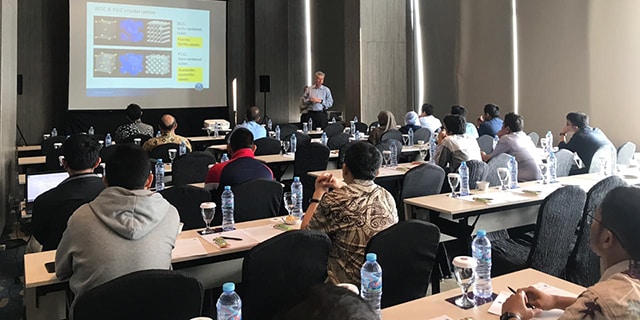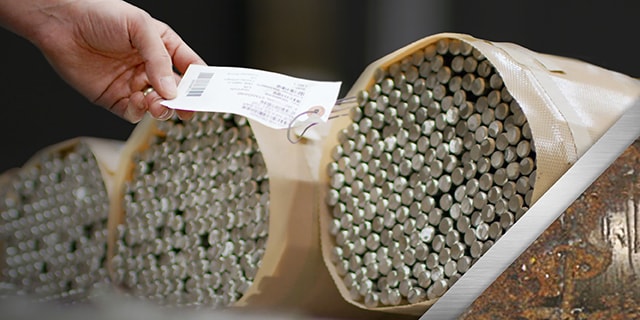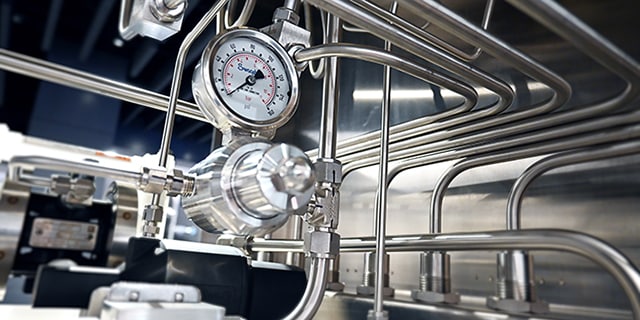Why Materials Science Training Matters to Oil and Gas Instrumentation Engineers

Why Materials Science Training Matters to Oil and Gas Instrumentation Engineers
Brian Van Valkenburg, Training & Services Marketing Manager
As the offshore oil and gas market has evolved, the stakes for reliable, leak-free operation have only become higher. Oil and gas operators looking to maintain safe operation free of environmental hazards while maximizing value have a tall order to fulfill.
A few things have happened. By and large, overall reliability of fluid systems and their basic components has become a top priority. Driven by operational costs and availability of labor, among other criteria, platform operators have increasingly sought componentry that lasts the lifetime of the platform—rather than requiring regular changeouts. Secondly, as platforms have moved farther and farther offshore, they require uncompromising reliability in greater depths than ever before.
Consider also that between instrumentation lines, hydraulic power, chemical injection, deluge systems and more, an offshore platform may contain nearly 50,000 feet of tubing, more than 20,000 fluid system components, no fewer than 10,000 fittings, and as many as 8,000 mechanical connections. Each of these points are critical to comprehensive platform reliability and safety; specifying the right components and materials is of utmost importance.
These conditions speak to the heightening importance of understanding metallurgy and materials science—and why proper training on these topics and selection can help today’s oil and gas professionals prevent corrosion and find greater success.
Swagelok’s Field Services Team regularly helps its oil and gas customers gain a firmer grasp on the selection and specifying of the right materials for their platform through our Materials Science Training program. Here is why oil and gas professionals can benefit from a deeper understanding of materials science, and what a successful training event from Swagelok can look like:
The Evolution of Alloys and the Benefits of Training
“Which materials should I select and specify?” is a more complex question than it sounds, and answering it is far from straightforward.
316 stainless steel tubing was once the material of choice for oil and gas applications everywhere. It had long delivered adequate performance—and under the right circumstances, still does. But as the market evolved and many oil and gas companies began requiring higher performance in tubes and fittings throughout their platforms, 316 stainless steel tubing began to show its vulnerabilities. Corrosion stemming from harsh oceanic conditions will become an issue long before the end of an offshore platform’s life, but ongoing replacement of corroded components is expensive and risky.
How to prevent corrosion? New alloys delivering reliable corrosion performance have since been developed, including Swagelok’s super duplex stainless steel formulation, 6 moly stainless steel, and others. So, it would stand to reason for oil and gas professionals to specify higher-performing alloys throughout their platforms for every application—right?
Not necessarily. The right materials selection throughout differing systems depends on a variety of intertwining factors, including environmental conditions, required performance, and of course, cost. And while many operators may prefer to specify one material for simplicity’s sake, that is not often the most economical choice.
For example, 316 stainless steel provides good ductility for ease of forming and welding at an attractive price point. It remains applicable for some oil and gas fluid systems, especially if those systems are hidden or otherwise protected from environmental factors like sun, salt spray and others. Importantly, though, not all 316 stainless steel formulations are the same—higher concentrations of nickel and chromium than minimally required by ASTM can lead to enhanced corrosion resistance and reliability.
On the other end of the spectrum, sour gas fluid systems require the ultimate in corrosion resistance to prevent sour gas cracking, or sulfide stress cracking (SSC). SSC is the deterioration of metal due to contact with hydrogen sulfide and moisture—a common, severely corrosive combination found on many offshore platforms, especially as more sour reservoirs are developed around the globe. The result is embrittlement of the material, resulting in cracking under the combined action of tensile stress and corrosion. More advanced alloys—including Alloy 825, Alloy 625 and others—must be specified for safety and sustainability and are outlined by the NACE MR0175/ISO 15156 standard.
Between both ends of the spectrum, there are additional opportunities to deploy specific alloys to best meet the needs of that application. For instance, some systems may require that only tubing be specified as an advanced alloy, while 316 stainless steel remains adequate for tube fittings. When oil and gas professionals are armed with a robust working understanding of materials science, they are more empowered to make optimized choices and maximize value throughout the platform.
Materials Science Training in Action
There is a lot that goes into a successful training program, no matter the subject matter. When evaluating training opportunities, though, oil and gas operators should always seek trainers who have significant real-world experience and have been through robust training themselves.
The most successful training programs do not paint with a broad brush—they are based on the needs and challenges that your facility faces every day. Good training depends on the trainer’s ability to understand local circumstances, regulations, and other geographic-specific factors that impact your facility. Regulations that govern oil and gas activity in the Northern United Kingdom, for example, are different from those in the Gulf of Mexico.
Regional specificity for training may also include the general level of knowledge among local workforces. For instance, Swagelok’s Malaysia sales and service center does a significant amount of business within the Malaysia, Indonesia, Singapore, Thailand and Vietnam markets, where a thriving yet still emerging oil and gas market is beginning to take shape. Through this experience, we know there is a strong appetite for materials science and corrosion training—highly important to high-stakes oil and gas operations. Our teams have had the opportunity to provide tailored metallurgy and materials science training to help elevate the knowledge of industry stakeholders for greater success. Other markets, and other specific plant applications, may have different needs. Our trainers additionally held lunch and learn sessions with key customers to answer their specific questions about alloys.
Individual specificity matters when it comes to training and materials selection, too. There are virtually countless differences between individual oil and gas platforms around the world, and all impact materials selection. What methods are typically used for installation of tubing and fittings? How do operators and maintenance staff keep systems clean? Can systems be shielded from sunlight or ocean spray?
These are the conversations that Swagelok has with every customer we work with when it comes to materials science training and materials selection and specification. The bottom line for any operation considering training opportunities is that localized service and specific expertise can be a real difference-maker, focused on relevant needs and challenges to your operations.
Interested in learning more? Find out how you can benefit from Swagelok training opportunities today:
Related Articles

Video: The Importance of Materials Selection
Learn about the importance of choosing the correct materials for your fluid system.

Material Matters: Selecting the Right Material for Corrosion Resistance
An offshore platform can have nearly 50,000 feet of tubing, more than 20,000 fluid system components, no fewer than 10,000 fittings, and as many as 8,000 mechanical connections. No wonder choosing corrosion-resistant material isn’t easy. Learn how to make choices right for your application.

Optimizing Medium-Pressure Oil and Gas Applications with Compression Fittings
For medium-pressure applications in oil and gas topside assets, the speed and performance benefits of compression fittings can make all the difference.

